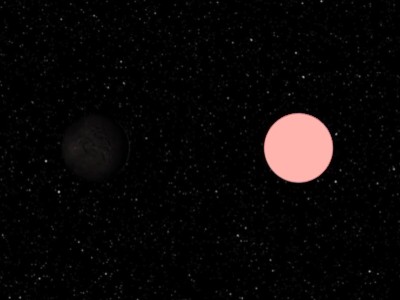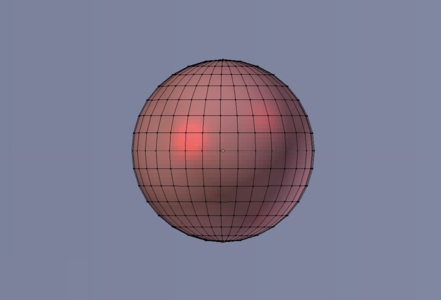I finished my red star flyby video and posted it to YouTube.
The YouTube link is: https://www.youtube.com/watch?v=TGdlfv8tk5A
I posted more about the video on my website at: https://dynamiclethargyfilms.ca/filmlist/interstellar-probe-830/
I keep thinking of things I want to change. Maybe I’ll have to do a “Interstellar Probe #831” some day.
This post is a mirror from my main blog http://www.dynamiclethargyfilms.ca/blog
Sunday, September 1, 2019
“Interstellar Probe #830” Posted
Labels:
Breakthrough Starshot
Sunday, August 11, 2019
Some Baby Steps on "Red Star Flyby"
I am still not getting things done very fast. I don't think I
have that much more I can do on it. There are too many interesting things on
the Internet.
This post is a mirror from my main blog http://www.dynamiclethargyfilms.ca/blog
I modified one of the planets to give it some clouds. I'm not
really a cloud making kind of guy. I hope it looks better with the clouds.
I’ve added a soundtrack. NASA turned some of the signals they
picked up from probes they sent to other planets into audio files. Some of them sound quite "spacy", so
I used them. They’re also in the public domain. I've listened to it several
times but haven't decided if I want to add more sounds. I’ve thought of adding
some “computer” beeps or a burst of telemetry sound.
Earlier I created some short clips of the probe approaching
the star connected by dissolves to give a better sense of the distances. I wanted
to add something similar at the end. As I worked on this, I decided that the
clips I added at the start were not right. It me quite a bit of time to rethink
what they should look like. Then it took a long time to make the changes to the
Blender animation. I think I have the inbound video the way I like it now. I started
on the outbound videos, but I’m not done yet.
Little changes seemed to get bigger and bigger as you work on
them. This is a common problem. I doubt I’ll ever be satisfied with the animation,
but at some point I’ll have to call it finished.
After I get the all the video cleared up, I want to add some
on-screen captions to give some information on what is being shown. I haven’t
given too much thought to that yet.
This post is a mirror from my main blog http://www.dynamiclethargyfilms.ca/blog
Labels:
animation,
Blender,
Breakthrough Starshot,
space probe
Sunday, June 23, 2019
The end of the Jaggy Star and a Mystery in "Red Star Flyby"
I made some progress on “Red
Star Flyby” over the last month. It looks like someday I just might finish
it.
This post is a mirror from my main blog http://www.dynamiclethargyfilms.ca/blog
Jaggy Star
I wasn’t happy with the star
image. It didn't look smooth and had kind of jaggy edges. I tried a bunch of
ways to fix that, without notable success. I had tried to smooth it out by
subdividing the object. That just made the file bigger, and the star still looked
jaggy.
I tried a different approach
this time and found that Blender’s subdivision surface modifier did what I
wanted. I had to delete the star I had been using and replace it with a new
one. I think it looks much more realistic now.
I also found that by of
replacing the star and using the modifier, I substantially reduced the size of
the Blender file. With the new star the file is less than 2% of what it had
been. This also resulted in the rendering working much faster.
A Mystery
I added in a little detail
that I suspect that many people will miss. It is visible in the video, but it
isn’t clear what it is. I want it to be a bit of a mystery and have people to
speculate on what it is.
Mission Clock
I created a "mission
clock" graphic to go with the video. It is kind of finicky work to do. At
least it keeps my mind occupied. I think what I have now is good enough for
what I want. I am always tempted to try and come up with something better.
Test Video
I did a test version of the
video which included the mission clock. It turned out better than I was
expecting. I was worried that the planet image would be too small and indistinct
to be interesting. They looked quite good. Of course, that hasn’t stopped me
from thinking I should try to find ways to make them look better.
Work to do
I still have some more
titles to add. I want to have captions describing the star and the planets. I
keep changing my mind about what names to give the planets. I do plan to have a
sort of catalogue number and designation, but I also want to give them
nicknames.
I want to include a title
with an explanation about why I wanted to make the video. I was inspired by the
Breakthrough Starshot project (https://breakthroughinitiatives.org/initiative/3).
From what they say, it will be 20 years before they can send a probe. Then
another 20 years for it to get to another star. After that, it would take 4
years for the data to get back to Earth. So, optimistically, it would 44 years
before we see anything. I rather doubt that I will be around for that. So, I
decided to make up my own “fake” starshot. I’m afraid that I can’t shrink down
that description into a short title at the start of the video. I’m open to
suggestions.
The video definitely needs a
soundtrack. I have toyed with the idea of having a dialogue between a pair of
news reporters commenting on what the video shows. At the moment I think that
is an extra step I don’t want to take. I’m not sure it would add that much, and
it would be a lot of extra work.
My current plan is to use
some of the sounds of the planets that NASA produced from the probes they sent
out. They are suitably eerie. I used them before in my “旅行火星 (My Trip to Mars)” video. https://dynamiclethargyfilms.ca/filmlist/my-trip-to-mars/
This post is a mirror from my main blog http://www.dynamiclethargyfilms.ca/blog
Labels:
Blender,
Breakthrough Starshot
Sunday, May 19, 2019
Yet Another Stab at “Red Star Flyby”

I got back to work on my "Red Star Flyby" video this week. I hadn't done anything with it since just before my heart attack. I’d like to get it done and move on to other projects. I have far too many unfinished projects.
I first got interested in
this idea when I read about Breakthrough Starshot. I realized that even under
the most optimistic scenario, I would be dead long before they got any results.
So, I decided I’d just make up my own imaginary trip.
It has been a while since I
last used Blender, but I was able to get the hang of it again after a little
experimentation. I learned a few new tricks while I was at it. The file has
gotten much more complex and the video takes up to 8 hours to render.
Names
I gave names to the star and
the planets. I just assigned a catalogue number for the star itself: MMC
898465843. This is not, so far as I know, a catalogue number that would ever be
used. I did come up with a name as well, but I wasn’t happy with it. I might
come up with something better later. I was tempted to call it Morison’s Star, but
that is just too egotistical for me.
The innermost planet I call Bowser.
It is somewhat larger than Earth. The next planet further out is Chuck, which
is midway in size between the Earth and Mars. Next out is Dodgeball, which is
very slightly larger than Earth.
Finally, the big planet is Elvis,
which is about twice the size of Uranus. It had been about the size of Uranus,
but it was also quite far from the camera, so looked small. I doubled the size.
It is still smaller than Saturn though and it still fits inside my computer ;).
I also gave it a moon. I thought it would make it look more interesting.
Camera
Adjustments
I had the camera focus on the
star and each of the planets in turn as it went through the system. The star just
didn’t look very interesting, so I changed the timing of when the camera points
to each of the planets. When I started on the project, I created an Excel spreadsheet
to calculate where everything would be at a given time, and which way the
camera should point. That made it much easier when I went to make changes.
Next Steps
One of the problems I have
is that the star doesn’t look all that round. It looks more like one of those
disco mirror balls. I’ve tried several ways to make it rounder. It is difficult
to tell if any of that helps.
Once I have the animation
the way I want it, I plan to add some sound. One of my ideas was to have a
commentary track of people talking about what the screen shows. I see that as a
lot more work than I want to do right now. I'll likely go with some sound
effects or music. Something "spacy".
If I go with just sound
effects or music, I should have some on screen data to describe what the viewer
is seeing. I'd like to include a "mission" clock to give an idea how
fast the space craft is going. My simulation is based on the Breakthrough
Starshot project, where the space craft is travelling at about 20% the speed of
light. The speed would vary as it flies through the system, but I decided not
to try to work out exactly how much it would change.
I want include captions
about the characteristics of star and the planets in the display. The sizes and
distances from the star I have already. I used a website: https://www.omnicalculator.com/physics/orbital-period
to calculate the orbital periods. They turned out to be much longer than I had
expected.
My
intent was that Dodgeball would get about the same light from the star as the
Earth gets from the Sun. With the orbital periods longer than I expected, I
thought I better check if that were the case. I used the luminosities of the
Sun, Proxima Centauri, and Barnard's Star with the inverse square law to
compare. A star midway in size between Proxima Centauri, and Barnard's Star
would work. I may adjust the size of the star to fit into this range.
In
the past, I’ve done a lot of stop and start on this project. I hope I can keep my
nose to the grindstone this time.
This post is a mirror from my main blog http://www.dynamiclethargyfilms.ca/blog
Labels:
animation,
Blender,
Breakthrough Starshot
Subscribe to:
Posts (Atom)


